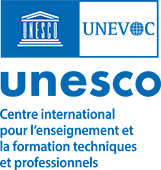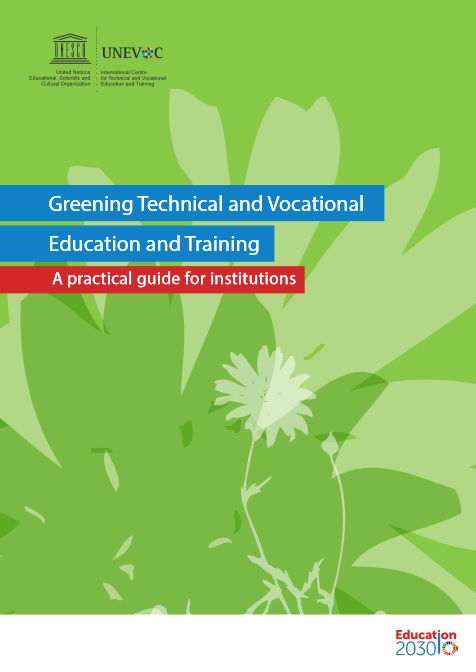
Le Centre International UNESCO-UNEVOC: Qui nous sommes | Ce que nous faisons | Nous rejoindre | Nous contacter
Le Réseau UNEVOC: En savoir plus sur le Réseau | Répertoire du Réseau UNEVOC
Espace Membres: Tableau de bord du Centre UNEVOC
Domaines thématiques: Inclusion et jeunes | Innovation et avenir de l'EFTP | Engagement du secteur privé | Les ODD et l'écologisation de l'EFTP
Nos programmes et projets clés: BILT: Connecter innovation et apprentissage | Renforcer la résilience de l’EFTP | Programme pour le leadership en EFTP | Journée mondiale des compétences des jeunes
Activités passées: Réponse COVID-19 | i-hubs: Former des pôles d'innovation | Forums mondiaux de l'EFTP | Conférences virtuelles | YEM Portail de connaissances
Nos services et ressources: Publications | Forum TVET | Profils nationaux d'EFTP | Glossaire TVETipedia | Pratiques prometteuses | Toolkits for TVET Providers | Formation à l’entrepreneuriat
Journal et événements: Grandes Manifestations EFTP | Journal UNEVOC

| Author/s: | UNEVOC/Hopkins & Majumdar |
| Éditeur: | UNESCO-UNEVOC International Centre |
| Publié: | 2017 in Bonn, Germany |
| Licence: | CC BY |
| ISBN: | 978-92-3-100231-1 |
This Guide describes the macro need for TVET reform in conformity with the Sustainable Development Goals, the Global Action Programme (GAP) on Education for Sustainable Development (ESD), and other United Nations, UNESCO and national initiatives. The Guide also provides specific practical help for institutional greening transition teams to plan and carry out the changes that are deemed necessary. It is essential that all such greening undertakings have a clear vision, are known to all those concerned, follow a strategic plan, set targets and milestones, and include a monitoring/assessment tool. The concept of shared vision and team reformation combined with the support of senior leaders is evident throughout this Guide. A major goal is that greening will grow into an ongoing process which is eventually infused into the culture of each institution.
Specifically included in this Guide is a rubric or framework designed for most TVET institutions. The rubric/framework is designed as both an assessment tool and a learning instrument, as it contains clear descriptions of possible goals and destinations. Since TVET institutions and programmes are so varied, these suggested assessment goals are also designed for discussion and adaptation to the specific situation on each site, while modifications are encouraged.
The central theme is Greening the Institution, while also embracing the broader concept of education for sustainable development (ESD). In particular the focus is on the role of TVET in delivering a crucial element of the GAP. By having local teams of leaders, faculty, students and community experts working in concert and infusing the concepts of related educational initiatives, the institution will transition itself into an even more effective and meaningful greening agent for its graduates, its communities and all who are associated with the institution.